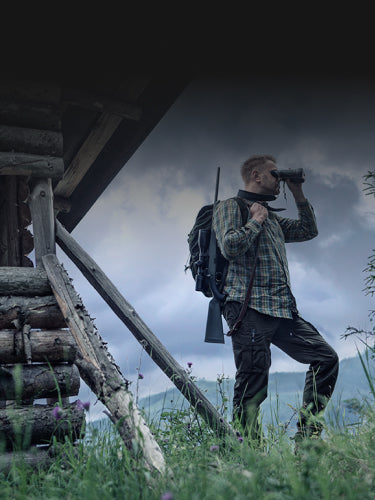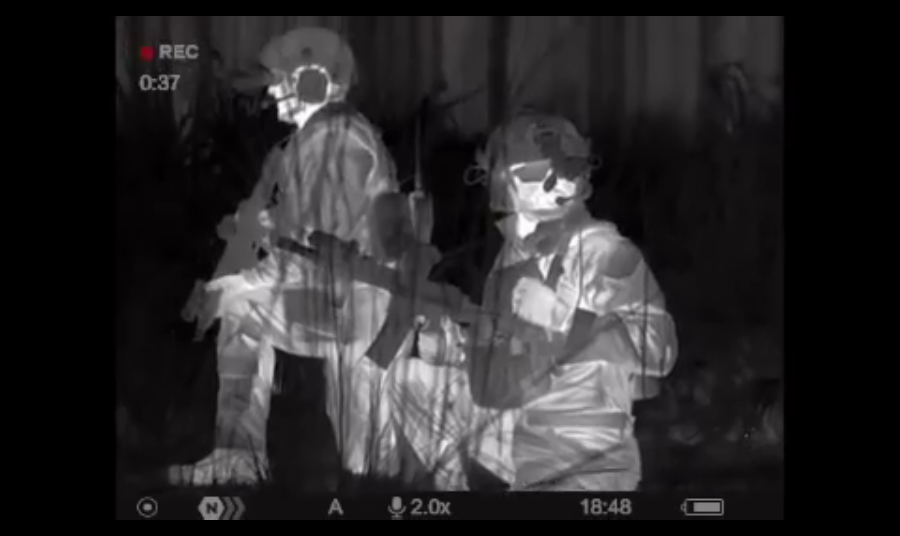At its core, law enforcement organizations are dedicated to preserving lives and ensuring the safety of both officers and civilians. In an increasingly complex and interconnected world, it is essential that law enforcement agencies employ every available technological edge to fulfill their mandate effectively. Technologies like thermal cameras have, time and again, proven to be invaluable in achieving these objectives.
Even though some critics view the use of thermal cameras as an intrusion into privacy and a threat to individual freedom, real-world examples demonstrate the life-saving potential of this technology.
For example, during the tumultuous Kenosha riots, the FBI's utilization of thermal aerial surveillance video played a pivotal role in validating Kyle Rittenhouse's self-defense claim. This technology accurately depicted Rittenhouse's actions, debunking erroneous allegations which claimed Rittenhouse chased down his attackers. Aerial thermal imaging, which showed a wider field of view and a more complete picture than the viral cellphone footage, proved Rittenhouse retreated from an angry mob before being forced to defend himself.
The innovative deployment of drones and thermal cameras by various police departments has facilitated the capture of suspects attempting to evade arrest by seeking refuge on rooftops and hiding in dense woods. Since thermal imaging systems defeat camouflage, finding and arresting these suspects before they cause more harm to community becomes easier and faster than organizing a long, drawn-out manhunt.
Thermal cameras have also been used to locate lost hikers, as exemplified when officers from the Dutchess County Sheriff's Office rescued two hikers who got lost on a hiking trail after dark. The pair couldn’t find their way back to their vehicle and had to call 911 for rescue. Members of the Sheriff’s Department and fire department launched a drone with a thermal camera and located them within only 90 minutes despite the fact the search area was 590 acres of dense wooded area. They were approximately 3/4ths of a mile away from their vehicle.
Thermal cameras have been instrumental in securing borders and combating human trafficking, as evidenced by their use by the Texas Department of Public Safety along the border with Mexico.
Beyond law enforcement, thermal cameras have even facilitated non-police operations, such as aiding emergency services in locating lost pets, exemplified by the Harvard emergency services' recovery of a Shiba Inu named Toro who got entangled in some branches in the woods after he wandered away from his owner.

Thermal imaging of Toro, photo courtesy of CBS.
Law enforcement agencies around the world recognize the value of thermal imaging technology. The Royal Canadian Mounted Police, operating in the challenging conditions of the far north, rely on devices like the Pulsar Axion 2 XG35. Its compactness, exceptional picture quality, and durability make it an essential tool for search and rescue operations as well as surveillance efforts in remote and hostile environments.
In a rapidly evolving world, law enforcement agencies must adapt and embrace technological advancements to effectively fulfill their roles as protectors of public safety and justice. The concept of "militarization of police" is often mischaracterized, detracting from the critical need for equipping officers with tools that can save lives, enhance investigations, and secure communities. The examples provided emphasize the tangible benefits of using technology to ensure the safety of both officers and civilians. By leveraging every technological edge available, modern law enforcement agencies can better serve their communities and uphold the principles of justice.
If our products have helped you in any way, share your story with us! Accepted stories will receive a 20% discount code.
Frequently Asked Questions
1. How do thermal cameras enhance police operations?
Thermal cameras help police locate suspects, rescue lost individuals, and secure borders more efficiently.
2. Are thermal cameras an invasion of privacy?
While some critics argue so, real-world examples show the life-saving potential of thermal technology.
3. Can thermal cameras help in search and rescue missions?
Yes, thermal cameras have been instrumental in locating lost hikers and even lost pets.
4. What role do thermal cameras play in combatting human trafficking?
Thermal cameras have been used along borders to aid in combating human trafficking, as seen with the Texas Department of Public Safety.
5. How do law enforcement agencies benefit from thermal imaging technology?
Law enforcement agencies worldwide recognize the value of thermal imaging for search and rescue operations, border security, and more.





